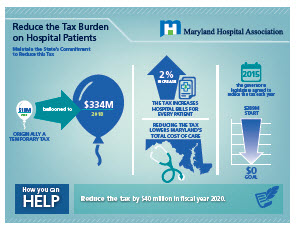Surgical Treatment Might Be Required To Deal With The List Below Kinds Of Ruptures:

https://www.medicalnewstoday.com/articles/incisional-hernia Composed By-Walters Munksgaard
* Inguinal rupture: An outcropping of tissue through a weakened location in the stomach wall, typically on one side of the groin.
* Hiatal hernia: A projection of the stomach with the diaphragm and into the chest tooth cavity.
* Umbilical hernia: A bulge near the stubborn belly button that occurs when a damaged area in the stomach wall allows fat or other cells to press via.
* Ventral hernia: A lump that takes place when a weakened area in the abdominal wall surface enables fat or various other tissue to push through, typically near a previous medical laceration.
* Incisional rupture: A lump that happens when a weakened area in the stomach wall surface enables fat or other cells to press through, commonly near a previous medical laceration.
It is very important to note that not all hernias call for surgery, yet these kinds do. If you believe you have a rupture, it is very important to speak with a healthcare expert for appropriate medical diagnosis and treatment.
So, you have actually been experiencing some pain recently, and after a thorough assessment, your medical professional has determined that you have a hernia. Now, prior to you start stressing, it is very important to comprehend that not all ruptures call for surgical treatment.
However, there are particular kinds that do, and that's what we're below to talk about. From inguinal hernias to umbilical hernias and even hiatal ruptures, each one provides its own one-of-a-kind challenges and considerations.
But allow's not be successful of ourselves just yet. We'll dive into the specifics quickly sufficient.
Inguinal Hernias
If you're experiencing pain and pain in your groin location, you may have an inguinal hernia that requires surgical treatment. An inguinal hernia occurs when a part of the intestinal tract or fat presses through a weak point in the inguinal canal, which lies in the reduced abdominal area.
This sort of rupture is more common in males than females and can be brought on by variables such as heavy lifting, straining throughout bowel movements, or chronic coughing. Signs of an inguinal hernia consist of a bulge in the groin area, pain or pain when coughing or lifting, and a feeling of stress or weak point in the groin.
If left without treatment, an inguinal rupture can bring about complications such as digestive tract blockage or strangulation, which is why medical treatment is essential to repair the hernia and protect against additional difficulties.
Umbilical Hernias
Do you know what an umbilical hernia is and exactly how it can be treated surgically?
An umbilical rupture occurs when a part of the intestinal tract or abdominal tissue protrudes with a vulnerable point in the stomach wall near the stomach button.
If you have an umbilical hernia that needs medical intervention, here are 3 therapy alternatives to consider:
- Hernia repair surgical treatment: This is the most usual therapy for umbilical ruptures. Throughout the procedure, the specialist will certainly make an incision near the hernia and push the extending cells back right into area. They'll after that reinforce the stomach wall using stitches or a mesh spot.
- Laparoscopic surgical procedure: In some cases, a minimally invasive technique called laparoscopic surgical treatment may be utilized. This method involves making small lacerations and making use of an electronic camera and specialized devices to fix the rupture.
- Open surgery: In more complicated situations, open surgery might be necessary. https://tampa.newsnetmedia.com/story/50337906/the-iskandar-complex-hernia-center-introduces-revolutionary-pain-management-strategies-post-hernia-surgery entails making a bigger incision to access and repair the hernia.
Hiatal Ruptures
A hiatal rupture takes place when part of the stomach sticks out through the diaphragm into the breast dental caries. This sort of hernia is reasonably common and often calls for medical treatment.
Hiatal hernias can be classified right into two major types: moving and paraesophageal hernias. Moving ruptures are one of the most typical and take place when the lower part of the esophagus and the top of the stomach slide up into the breast through the respite, a small opening in the diaphragm.
On the other hand, paraesophageal ruptures are less usual however much more extreme. In this type, a section of the belly pushes via the hiatus alongside the esophagus, triggering possible issues like stomach volvulus or strangulation.
Surgical repair work is normally necessary to treat hiatal ruptures and alleviate symptoms such as heartburn, chest discomfort, and difficulty ingesting.
Conclusion
So there you have it, the various kinds of ruptures that call for surgical treatment.
One instance of a hernia situation that required surgery is John, a 45-year-old guy that suffered from an inguinal rupture. Regardless of his preliminary pain and uneasiness, John opted for medical intervention.
The procedure was successful, and he experienced a complete recovery, allowing him to return to his normal activities with no further complications.
Remember, it is necessary to seek advice from a medical care specialist if you presume you might have a hernia that calls for surgical therapy.

